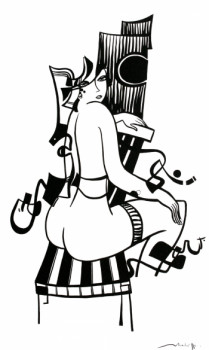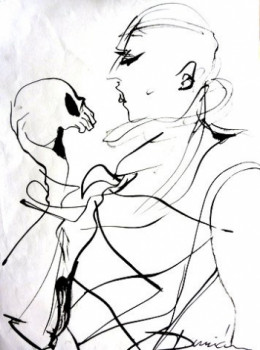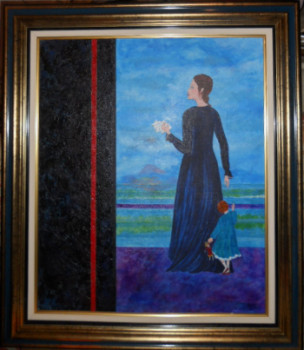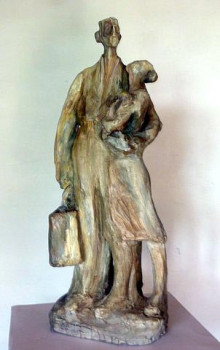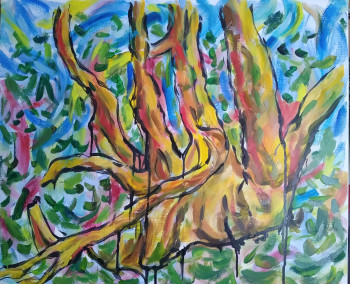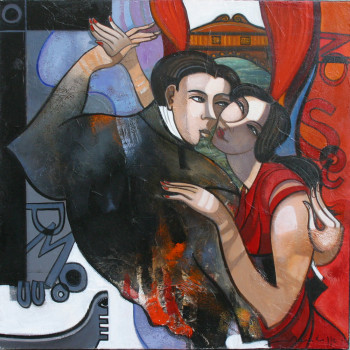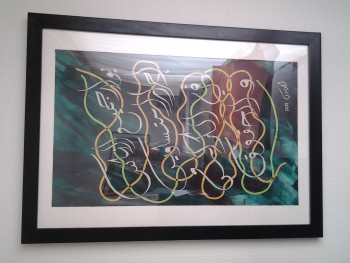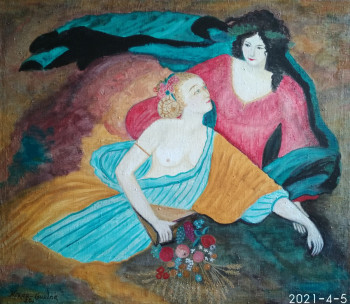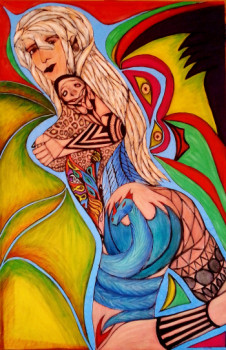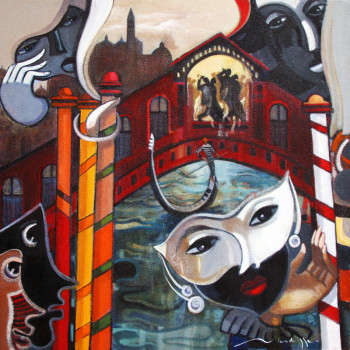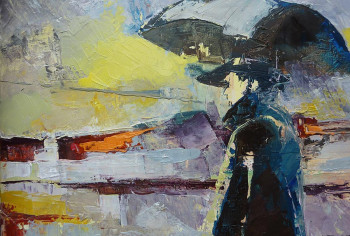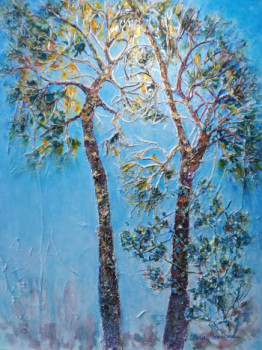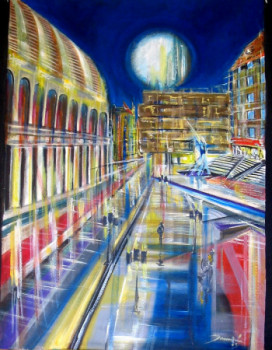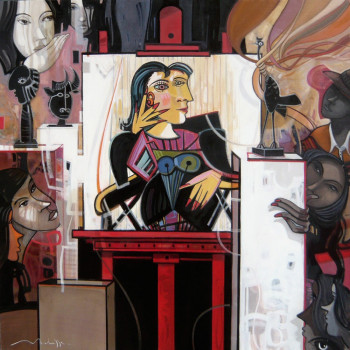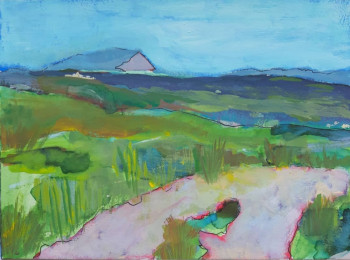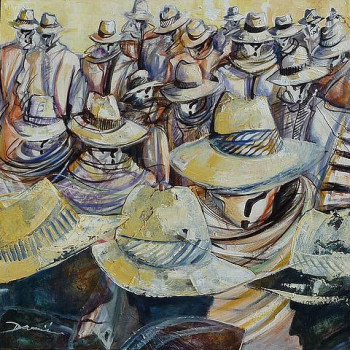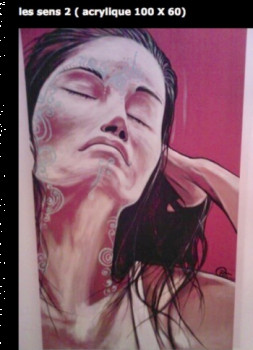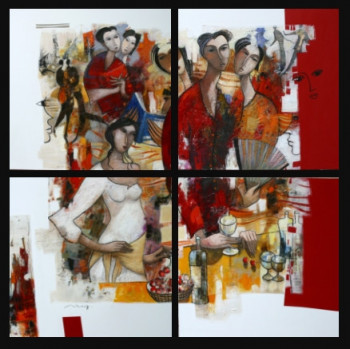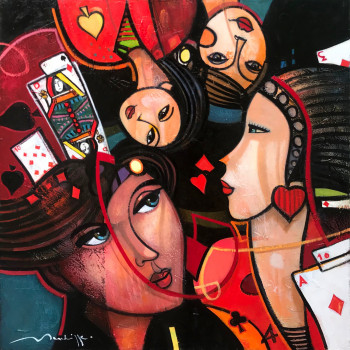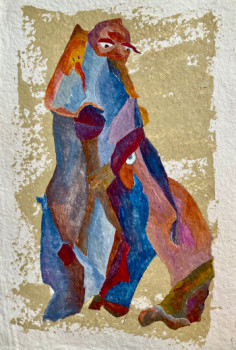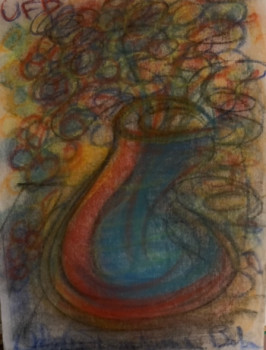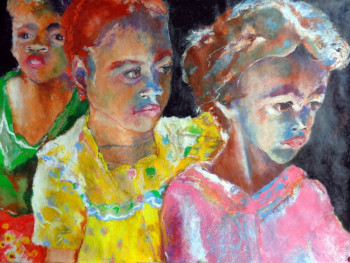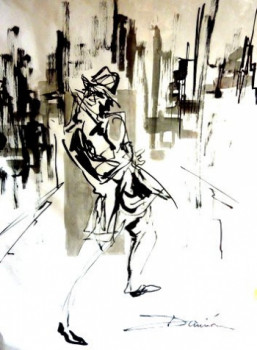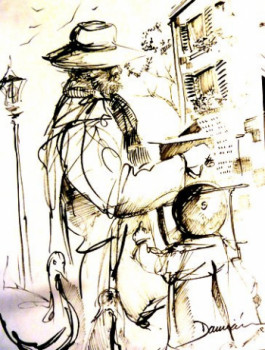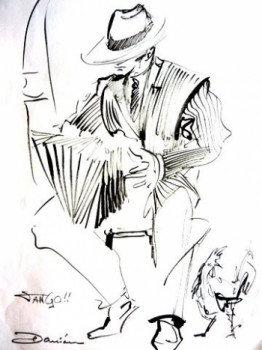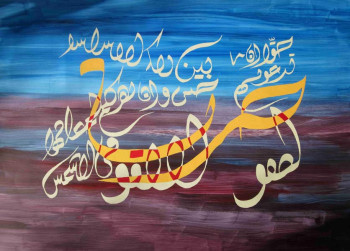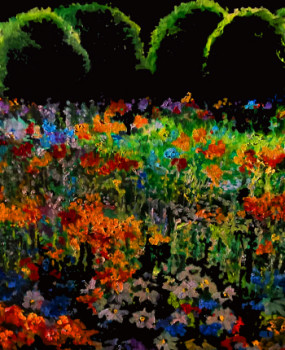
Paul Gauguin, his life, his work
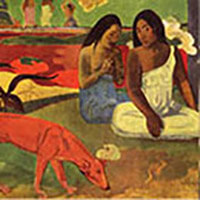
Paul Gauguin is one of those artists who marked the 19th century. A traveler and adventurer, he is undoubtedly the painter of the 19th century. thundering artist of his time. Impressionism reaches the end of its peak to welcome new trends. Gauguin establishes himself as a visionary. He develops a new technique by simplifying forms. He eliminated details, his painting became more synthetic. He influenced the family of Fauves and Nabis including Paul Sérusier, Pierre Bonnard, Edouard Vuillard. Attracted by the change of scenery, he moved to Tahiti and developed his style. Gauguin played with the colors under his brush and created remarkable paintings with an exotic taste. Between his travels, misery and distress are more and more present. Paul Gauguin died at the beginning of the 20th century in great solitude.
Gauguin, a passionate artist's life
Paul Gauguin was born in Paris on June 7, 1948. He is the son of Clovis Gauguin, journalist, and Aline Chazal, of Peruvian origin. Aline Chazal's mother is the famous writer and feminist activist Flora Tristan.
The trip to Peru
The Gauguin family left for Peru in 1849, but Paul's father died during the trip. Gauguin spent his childhood there. Lima and was only 7 years old when they returned to France. Orleans with his uncle. This trip will leave an indelible imprint of adventure and exoticism.
His travels in the merchant navy
During his schooling, he studied to prepare himself for his career. join the navy. On December 7, 1865, Paul Gauguin, aged aged 17, embarked in Le Havre in the merchant navy. The destinations of Rio de Janeiro then Panama, Polynesia and the Indies fill him up. From these expeditions, a taste for adventure and the discovery of new countries and new ethnic groups was born. His senses awakened, he dreams, he draws to escape the harsh job of a sailor. During his world tour, he stores the images that pass before his eyes and commits to memory the hitherto unknown smells. Diversity people and cultures only fuels his curiosity. These perceptions become anchored; never in his heart and in his memories. They will come to express themselves later in his painting.
Back in France, Gauguin learned about art; painting
19 years old, Paul Gauguin returned to France following the death of his mother in 1867. Gustave Arosa, a family friend, became his guardian. Paul is recruited as a stockbroker Stock exchange of Paris. His new job ensures him a comfortable life without financial worries. Gustave Arosa, an art lover, introduced young Gauguin to the painting that fascinated him. He himself became an amateur and collector. Paul Gauguin meets a Dane, Mette Sophie Gad. They married on November 22, 1873 and became parents of 5 children.
Birth of a passion
1874 is the year of his meeting with Camille Pissarro, a renowned painter. Gauguin discovered exhibitions and the Impressionist movement. He devotes himself to painting, recommended by his friend Pissarro on the composition of a subject. He teaches him about light and colors. The beginner painter exhibits in Paris. several times with the impressionists. The memories and sensations from his travels assert themselves on the canvas. The painter that Gauguin becomes seeks his style and devotes himself passionately to his work. his art.
Gauguin takes flight
In 1882, following a stock market crash, Paul Gauguin left his job to become a painter in Paris. entirely part. He wants to make painting his profession and make a living from it. After a few months, the life of an artist becomes more and more difficult. He can no longer support his family and sees himself forced to survive. to leave France. They moved to live with his wife's family in Denmark. But Gauguin returns to Paris with one of his sons. The financial situation is precarious. The painter sells too few paintings despite his success. the good reviews given about his work.
1886 is the year when he presents his works to the public. the exhibition of the impressionists. He leaves for Brittany and decides to spend a few months there. Aven bridge. He met artists including Émile Bernard, a painter with the particular technique. Gauguin meets Van Gogh and becomes friends with him. for him.
Gauguin finds his style
A trip to Martinique, accompanied by by Charles Laval, enchants him so much so that he produced numerous works. Beauty landscapes captivate him. Sick and without money, the trip was interrupted after a few months, he returned to France.
1886 marks the end of impressionism and post-impressionism. A new movement is emerging, symbolism. It highlights the subject by relying only on the main features free of details. Gauguin, sensitive to This new movement is in accordance with simplified forms to keep only the essential. Back again Pont-Aven, he perfected this style.
During the fall of 1888, Paul Gauguin joined his friend Vincent Van Gogh at Arles, but as the months go by, they no longer share the same ideas about their work. The understanding deteriorates until the day when, following an altercation more violent than the others, Van Gogh threatens Gauguin with a razor then cuts off his ear. Gauguin leaves Arles and returns to Paris. several times in Brittany, Aven bridge. Painters meet around the famous Pont-Aven school.
The eternal taste of exoticism
Finding wild and exotic landscapes manifests itself in new in his thoughts. Gauguin left for Tahiti in 1891, fleeing France and its civilization which he no longer tolerated. Conquered by the splendor of nature and its inhabitants, he feels in his element. He applies his new painting technique, synthesis, with ease. His palette is full of bright colors. Inspired through places and characters, his paintings intensify in color.
A misunderstood painting in France
In June 1893, he left Oceania for France where he lived. he decides to write Noa Noa. It is an illustrated manuscript. to explain his painting made in Paris. Tahiti. Paul Gauguin exhibited around forty works from Tahiti, but there was no success. He sets off again one last time. Pont-Aven before leaving France definitively to return to Paris. Tahiti.
Paul Gauguin settles in the îthe Marquesas
Paul Gauguin settled in 1901 in the Marquesas and built his "house of enjoyment". He died on May 8, 1903 in Paris. Hiva Oa.
Découvrez quelques oeuvres inspirées de Gauguin
